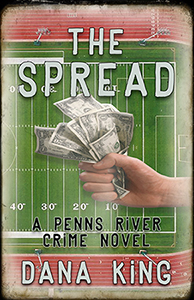I first became aware of
Steven Johnson when The Beloved Spouse and I watched his six-part miniseries, How We Got to Now on PBS last fall. (How
we became aware of the miniseries eludes me.) By Episode 3 I had already placed
the companion book on my Wish List. TBS doubled down at Christmas, buying both
that and one of Johnson’s earlier books, Where
Good Ideas Come From: The Natural History of Innovation.
Johnson has two great
gifts. His engaging personality conveys well on screen, and in his writing. He
approaches weighty subjects with respect but no fear, making what might have
been difficult concepts less intimidating though his easygoing prose. He makes
no pretense of having figured out any of what he writes about on his own. In
fact, that’s an underlying theme of both books: no one (hardly) ever figures
out anything on his or her own. Everyone stands on the shoulders of those who
came before in order to see farther than their predecessors. Others are working
on similar things at the same time; knowledge spills over. He even has a term
to explain why things work this way: the adjacent possible. (Which term he
lifted form someone else and uses to good advantage.)
Johnson’s other, and most
compelling gift—there are lots of personable people in the world who aren’t
good for fuck all else—is an ability to tie things together, and to see where
they came from. Charles Babbage was a genius of inestimable insight. His
mechanical forerunner of the modern computer anticipated virtually every aspect
of computing we have come to take for granted, yet he could never build one; it
wasn’t practical without vacuum tubes. The electric light bulb has come to
symbolize an inventor’s “Eureka!” moment, yet Edison did not have such a moment
when working on his bulb. Edison did not, in fact, invent the first bulb. He
didn’t even invent the first practical bulb, not on his own. What Edison
invented was the process—not unlike an assembly line—that allowed his teams of engineers
and scientists to create the first practical bulb. While it may seem prosaic to
the average person, that’s the invention that has more lasting implications:
creating a process than can be scaled and duplicated.
Where
Good Ideas Come From ends
with an attempt to quantify how the major scientific and technological advances
of the past several hundred years came to be. Conventional Wisdom, at least in
this country, holds these advances are the work of entrepreneurs working with
profits foremost in their minds. Looking at the origins of key advances shows
they are far more likely to come about through non-market-oriented
collaborative networks, in part because market-driven innovation creates
knowledge silos, and doesn’t continue down roads that do not appear to be
profitable. The collaborative approach avoid both pitfalls.
I can get down a rabbit
hole talking these books; they fascinate me. You’ll have a lot more fun, and
learn exponentially more, by reading them yourself. Johnson now occupies a
unique position in my reading rotation: the only non-fiction writer on it. I
have every intention of reading everything he writes, which means I should
never run out of fresh material. Johnson’s 13 years younger than I.




No comments:
Post a Comment